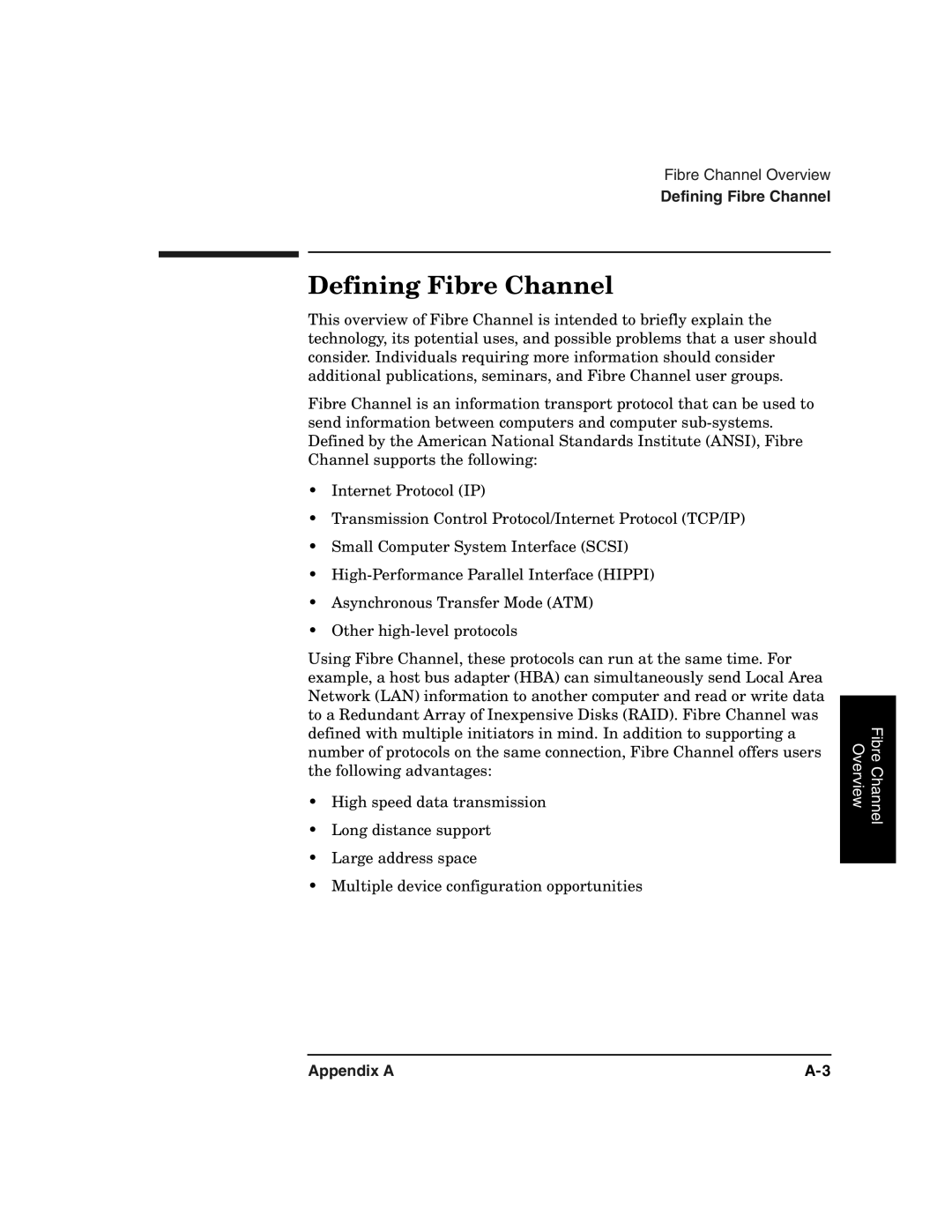
Fibre Channel Overview
Defining Fibre Channel
Defining Fibre Channel
This overview of Fibre Channel is intended to briefly explain the technology, its potential uses, and possible problems that a user should consider. Individuals requiring more information should consider additional publications, seminars, and Fibre Channel user groups.
Fibre Channel is an information transport protocol that can be used to send information between computers and computer
•Internet Protocol (IP)
•Transmission Control Protocol/Internet Protocol (TCP/IP)
•Small Computer System Interface (SCSI)
•
•Asynchronous Transfer Mode (ATM)
•Other
Using Fibre Channel, these protocols can run at the same time. For example, a host bus adapter (HBA) can simultaneously send Local Area Network (LAN) information to another computer and read or write data to a Redundant Array of Inexpensive Disks (RAID). Fibre Channel was defined with multiple initiators in mind. In addition to supporting a number of protocols on the same connection, Fibre Channel offers users the following advantages:
•High speed data transmission
•Long distance support
•Large address space
•Multiple device configuration opportunities
Overview | Fibre Channel |
|
|
Appendix A |
